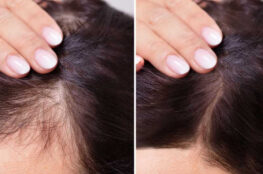Long-term negative impacts on a child’s mental and emotional health can result from childhood trauma. People who have experienced trauma from things like abuse, neglect, accidents, natural catastrophes, or witnessing violence may suffer severe emotional harm. The good news is that kids may recover and have happy, fulfilling lives with the correct care and direction. Youngsters show incredible resiliency. In this healing process, child psychologists with specific training in treating trauma are invaluable.
Comprehending Childhood Trauma
There are several sorts of trauma.
1. Physical trauma: This includes wounds from maltreatment or accidents.
2. Emotional trauma: brought on by the loss of a loved one, abandonment, or maltreatment.
3. Sexual trauma: Consisting of sexual assault or abuse.
4. Psychological trauma: Resulting from being in the presence of violent acts or natural disasters.
A variety of symptoms, such as anxiety, sadness, behavioral issues, nightmares, and flashbacks, can manifest in children who have experienced trauma. These symptoms might interfere with their ability to form meaningful relationships, disrupt their daily routines, and impede their academic achievement.
Children’s Therapy’s Function in Trauma Recovery
A licensed child psychologist offers a private, secure setting where kids may communicate their ideas, emotions, and anxieties. One of the most important ways that therapy helps children heal from trauma is by:
1. Creating a Safe Environment
In a safe, accepting setting that therapists provide, children may talk openly about their traumatic experiences and emotions without fear of facing the consequences. The healing process requires this environment.
2. Establishing rapport and trust
The kid and the child psychologist must have a solid therapeutic connection. Trauma typically causes harm to trust, but with patience, consistency, and active listening; a trained therapist may help to progressively restore it.
3. Expressing and Handling Emotions
Youngsters may find it difficult to express their emotions verbally or may not be aware of the emotional effects of trauma on them. Using the techniques and skills this therapy offers, kids may communicate and work through their emotions.
4. Giving Coping Skills Instruction
Children who see a child psychologist are given coping mechanisms to help them deal with anxiety, despair, and other difficult emotions. With these skills, kids may reclaim their own life.
5. Recognizing and Combating Negative Thoughts
Trauma frequently results in unfavorable views about oneself. Children who get therapy can identify these negative beliefs and swap them out for more constructive, wholesome ones.
6. Family and Parental Involvement
Child psychologists collaborate with families to enhance understanding, communication, and support for the child’s recovery process.
Strategies for Trauma-Related Child Therapy
1. Play therapy: Especially beneficial for younger kids, play therapy lets them express themselves via toys and art projects, which gives therapists a better understanding of their feelings.
2. Cognitive-behavioral therapy (CBT): CBT assists kids in identifying and altering harmful thought patterns and behaviors that stem from traumatic experiences. It offers useful methods for stress and anxiety management.
3. Eye Movement Desensitization and Reprocessing (EMDR): EMDR is useful for children who are having nightmares and flashbacks associated with trauma. It helps them digest difficult memories and lowers the strength of their emotions.
4. painting Therapy: Art therapy, like play therapy, enables kids to express their emotions and life experiences via painting.
5. Trauma-Focused Cognitive-Behavioural Therapy (TF-CBT): TF-CBT integrates cognitive-behavioral methods with trauma-sensitive therapies, and it is specifically created for kids who have gone through trauma.
The Healing Process: What to Anticipate
Trauma-related child treatment is a path toward healing and rehabilitation rather than a fast remedy. Depending on the specific requirements of the kid and the extent of the trauma, the length and intensity of therapy may change.
1. examination: To understand the child’s history, symptoms, and particular trauma events, a thorough examination is frequently the first step in the therapeutic process.
2. Goal-setting: In collaboration with the child and family, therapists establish attainable objectives for treatment that function as indicators of advancement.
3. Frequent Sessions: Depending on the requirements of the kid, therapy usually entails weekly or more frequent sessions.
4. Gradual Progress: Development may occur gradually and slowly. It’s critical to have patience and recognize that recovery takes time.
5. Parental and caregiver Involvement: Frequently, parents and caregivers participate actively in treatment. They get instructions on how to aid in their child’s recuperation at home.
6. Celebrating Success: No matter how minor an accomplishment may seem, it should be acknowledged at every turn. These accomplishments represent development and resiliency.
Conclusion
Child therapy is a useful tool for assisting children in their trauma recovery and building the resilience they need to live healthy, meaningful lives. Children can heal and recover more quickly if trauma is addressed early and efficiently. Even though the path to recovery may be difficult, a child’s life can significantly improve with the support of licensed therapists and a caring family.
If trauma is causing issues for your child, the best child psychologist can help. Alternatively, you may utilize TalktoAngel, the best kid counseling site, to find a “Child Psychologist near me.”
Also check – How Parents Affect Their Child’s Mental Health




December 26, 2023
[…] Also check – How To Heal From Childhood Trauma […]